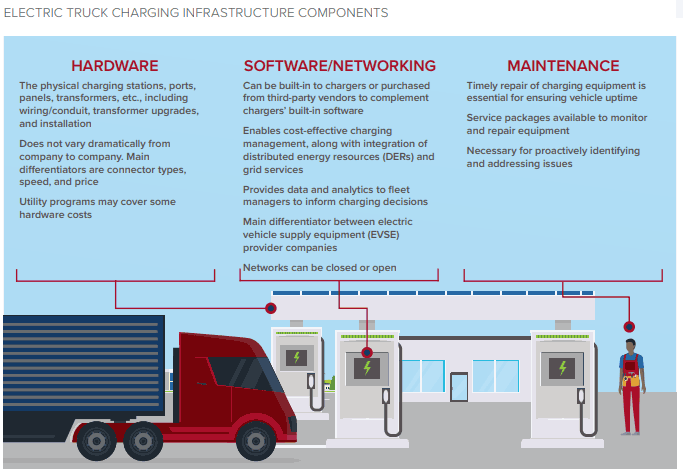The interest in electric trucks remains very high, though we are clearly some years away from long haul e-trucks. Local and medium haul trucks - they may be just around the corner.
As with other alterative fuel vehicles, it is a bit of a "chicken and egg" scenario for electrics, as carriers and shippers require a charging infrastucture to make electrics work for them, while internally or externally there needs to be enough volume to justify the infrastucture invesment.
A new report from transportation research organization the North American Council for Freight Efficiency (NACFE) notes that "Charging infrastructure has been identified as one of the largest unknowns and sources of anxiety for fleets considering near-term adoption of battery electric vehicles."
There are three components required for battery charging. Those are: hardware (i.e., electric vehicle supply equipment (EVSE), also known as charging stations),, software, and maintenance, as shown in the graphic below from the NACFE report:

Source: NACFE
Interestingly, the report notes that "Charging software is key for easily and cost-effectively managing fleet charging operations and is now the main differentiator between EVSE provider companies."
For example, the reprort notes, software is what allows multiple chargers on-site to be able to communicate with one another to optimize sequencing, load management, and variable time-of-day electricity rates and other factors that ensure that a fleet is charging smartly.
Electric trucks are coming, but it will require quite a bit of investment in infrastucture to get there.
Any Feedback on our Supply Chain Graphic of the Week? Let us know your thoughts at the Feedback section below.
Your Comments/Feedback
|